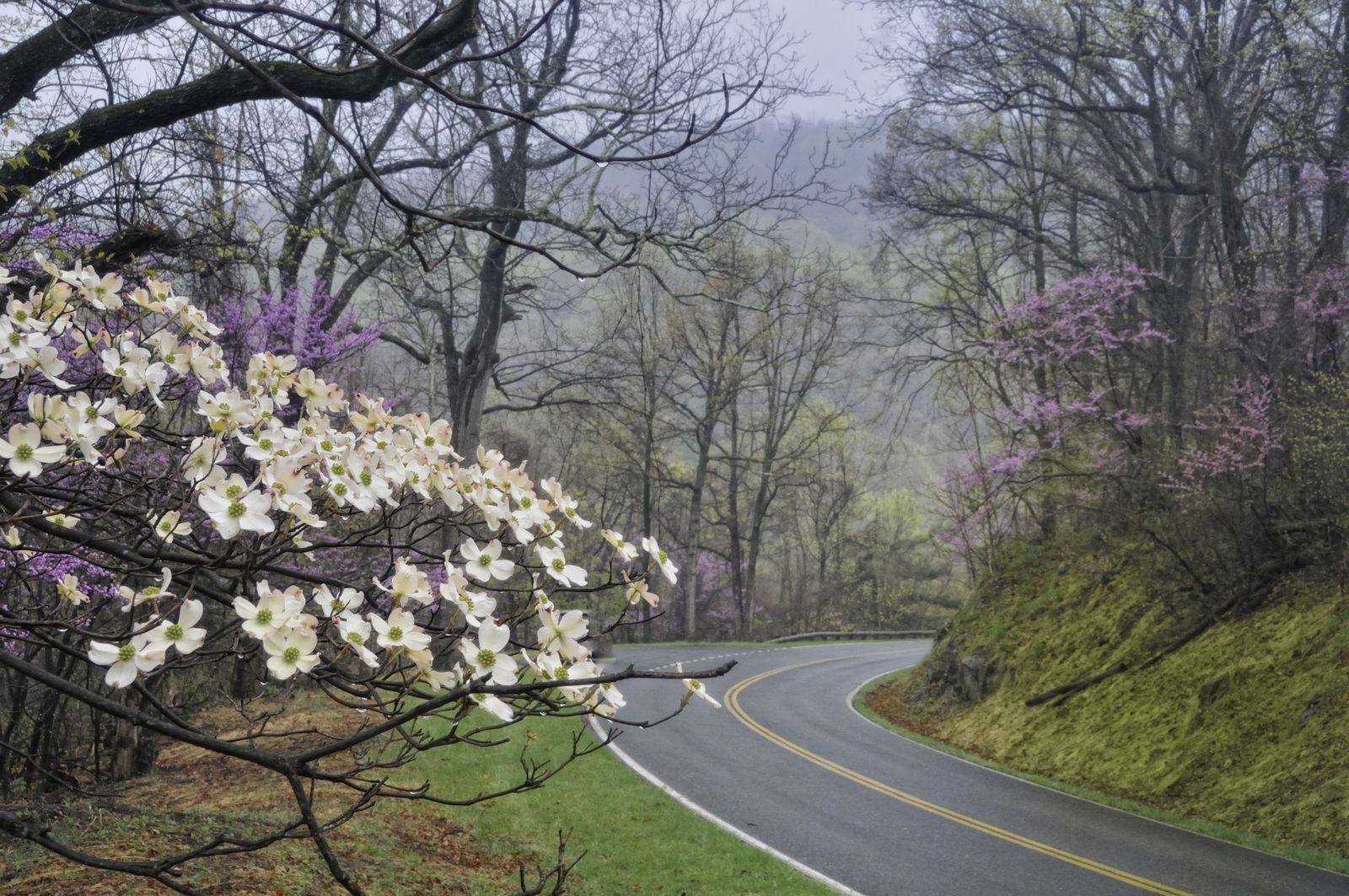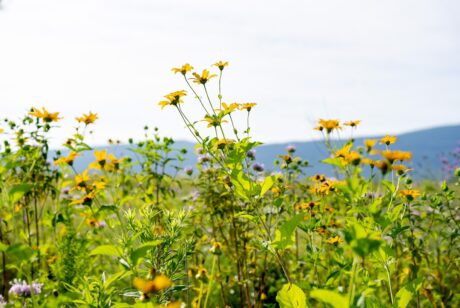by Patressa Kerns
Ralph Waldo Emerson wrote: “Earth laughs in flowers. “ If Emerson was right, Shenandoah National Park – with its more than 860 different species of wildflowers – positively belly laughs from late March into October!
Starting in spring, when the first lavender-hued hepatica and bright yellow coltsfoot bloom delicately against the cool, brown earth, and continuing through early autumn, when those same moonlit pale purples and sunny yellows reappear in asters, goldenrods, and witch hazel’s raggedy flowers, Shenandoah National Park provides display after display of nature’s spontaneous and colorful expressions of mirth – wildflowers.
Spring
Although it is in March, after the long winter months, that we most crave the sight of wildflowers, May is the best time to see the largest array of spring wildflowers in the Park. April showers and warmer temperatures combine to help flowers poke through the rain-softened earth and open their buds to the sun. Trilliums and bluets, violets, wild geraniums, and jacks-in-the-pulpit show themselves along trails and roadsides. Blue-eyed grass winks from visitor center and lodge lawns. Buttercups and moss phlox lure you out of your car from roadsides and overlooks. Bubblegum-pink wild azaleas and golden ragwort greet you gaily from banks along Skyline Drive.
Summer
But it doesn’t stop in May. The exhibition of wildflowers in Shenandoah continues all summer long. One of the Park’s most popular flowering shrubs, mountain laurel, blooms profusely along trails and Skyline Drive in June. Cow parsnips, looking like giant Queen Anne’s lace, stand at attention as you motor by. Milkweeds, daisies, and wild columbine greet the summer visitor. And black-eyed Susans, jewelweed, Turk’s cap lilies, and Joe-Pye weeds provide plenty of color as summer turns toward fall.

Touch But Don’t Take
Even though it’s tempting to pick wildflowers, plucking even one of the fragile beauties has repercussions that last for years. Some wildflowers are rare, and picking one means it is gone forever. Many wildflowers are essential to pollinators like bees and birds. Many wildlife depend on wildflowers for food. All wildflowers have their place in the ecosystems in which they live; without wildflowers, some insects and animals would perish. Most wildflowers wilt soon after being picked anyway, sending a clear message that they are meant for fields and hollows, not for the Mason jar.
Leave wildflowers for others to enjoy. Remember, you can take as many pictures of them as you like.
Visit Shenandoah National Park’s website for more information on the Park’s wildflowers. From there, you can download a copy of the Wildflower Calendar. Stop by one of the two visitor centers – Dickey Ridge at mile 4.6 on Skyline Drive or Byrd at mile 51 – and check with Rangers to see what wildflowers are blooming in the Park and where you might expect to find them.
Did You Know? Shenandoah National Park has over 500 miles of trails. Over 30% of the trails are in designated wilderness areas which are often blanketed with wildflowers (and bees!)
